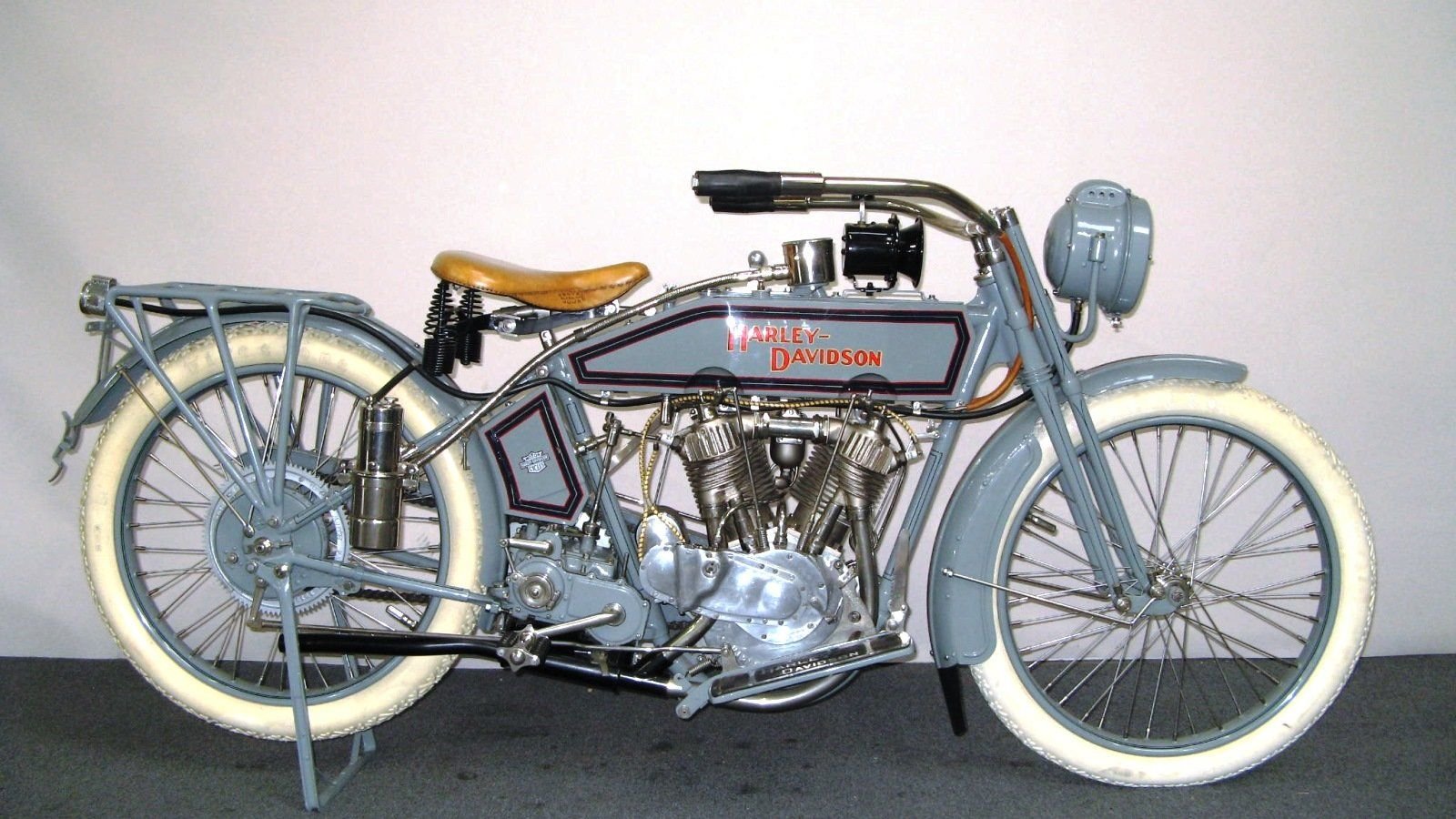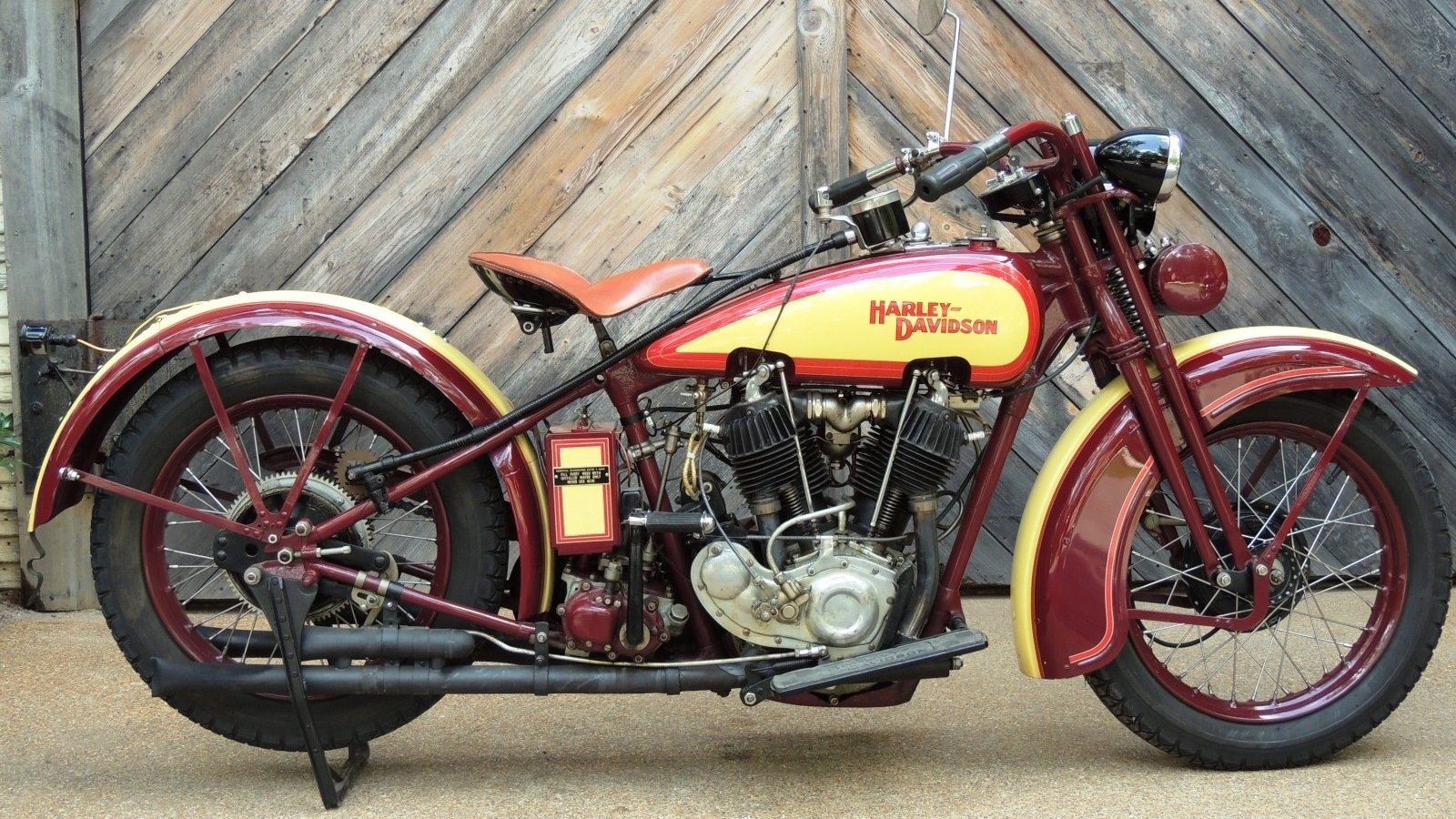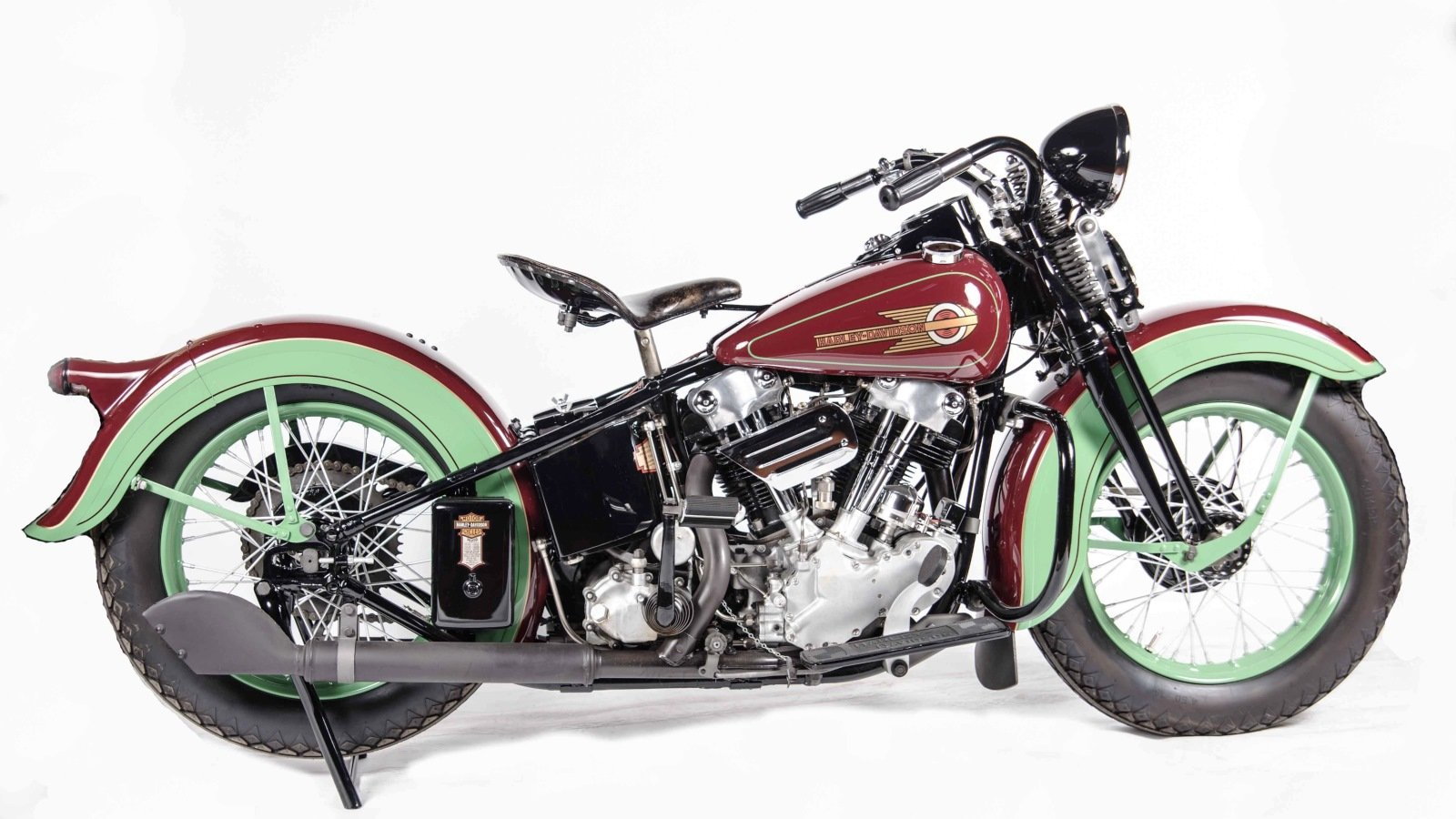Daily Slideshow: Harley-Davidson's 9 Best Bikes Ever Made
Although Harley-Davidson has produced a great number of awesome motorcycles through the years, there can only be so many on this list. The following motorcycles have had the most significant impact on the success of the brand.


















1. THe 1903 Single
For being one of the largest motorcycle manufacturers in the world, Bill Harley and the Davidson brothers (Arthur, Walter, and William) did not make a huge impression on the motorcycling scene with their 1903 Single as one might expect. In fact, the first Harley-Davidson motorcycle was typical of what was offered by various other motorcycle manufacturers at the time. The little 405cc single only made about 3 horsepower, and could only reach 35 MPH with a heavy tailwind, but could climb most hills without the need of using the pedals. By contemporary standards, the 1903 Single was not a very special motorcycle, but it was the result of ideas and engineering made in real metal, and the beginning of a partnership that would create 100+ year legacy. In retrospect, this bike is indeed very special as it represents the acorn which grew the mighty oak that is Harley-Davidson Motor Company.
>>Join the conversation about the 9 best Harley-Davidson bikes right here on Harley Davidson Forums.
2. The 1915 Model 11F V-Twin
While not the first Harley-Davidson ever built, or even the first offering of their production V-twin engine, the 1915 model 11F was quite a breakthrough for the company. Big improvements introduced with this model included a new mechanically-driven setup for worry-free lubrication of the crankshaft, as well as the introduction of the 3-speed transmission that would endure until 1936, when the 4-speed first bowed. Harley sales skyrocketed with over 9,000 model 11F units sold, though they still trailed Indian. A big contributor to their increased sales was due to their model 11K in the racing scene, which is said to have been able to reach speeds of up to 100 MPH.
>>Join the conversation about the 9 best Harley-Davidson bikes right here on Harley Davidson Forums.
3. The 1929 Model JDH
The 1929 Harley-Davidson model JDH was the culmination of years of development work on the J/JD series motors from Harley. This last hurrah of the pocket valve J series motor saw engineers from the racing department make numerous improvements to give the 1200cc (74 cubic-inch) two-cam V-twin a healthy boost in horsepower. Components such as domed high-compression alloy pistons, dual intake valve springs, and tappets in place of roller arms saw the JDH blow right past high performance bikes like the Excelsior Super X and Indian Scout. While weighing over 400 pounds, the JDH would still hit 85 MPH in stock form, and with minor tweaks, could reach speeds over 100 MPH.
>>Join the conversation about the 9 best Harley-Davidson bikes right here on Harley Davidson Forums.
4. The 1936 Model E/EL Knucklehead
The 1936 model E/EL bikes were the first Harley-Davidson production motorcycles with the new overhead-valve engine, featuring a dry sump, recirculating, full pressure oil system, plus a 4-speed transmission. This motor came to be known as the "Knucklehead" because of their uniquely shaped rocker boxes. The overhead-valve engine design was previously used only in racing applications because Harley had not been able to make them reliable enough to serve as an engine for daily use. After five years of rigorous engine development, combined with the ultra stable duplex-tube cradle frame and sleek styling, make for a bike that, even today, is as sexy as they come. Many regard the introduction of the Knucklehead as the beginning of true performance bike, with the motors producing 40 horsepower and reaching upwards of 100 MPH in stock form. The Knucklehead would continue to evolve with numerous improvements over the next 12 years, but the 1936 model was where it all began.
>>Join the conversation about the 9 best Harley-Davidson bikes right here on Harley Davidson Forums.
5. The 1941 Model WLA WWII Military Bike
The model WLA was Harley-Davidson's contribution to the US war effort during World War II, providing escort, courier, scouting, and communication duties across the war front. A key aspect of the WLA was reliability, and while it did not produce hefty performance numbers, the older style side-valve (aka flathead) V-twins proved to be quite durable, and able to run on the lowest quality gas in the worst conditions. Harley ended up producing over 90,000 WLA motorcycles along with millions of spare parts over the course of the war. For rough terrain, the WLA featured a springer front fork that was 2.5" longer than standard for additional ground clearance, which made it a desirable unit for bike customization after the war when guys began to build bobbers and choppers.
>>Join the conversation about the 9 best Harley-Davidson bikes right here on Harley Davidson Forums.
6. The 1957 Model XL Sportster
Following the war, the US saw an invasion of lightweight motorcycles from Europe with good performance for their relatively small sizes, and better handling. Harley found themselves playing catch-up as they did not have a motorcycle in their lineup to compete with the likes of the Triumphs and BSA's. Harley first introduced the K model in 1951, which featured modern improvements like a foot shifter, left-hand clutch lever, hydraulic telescoping forks, swing arm rear suspension, and an improved side-valve engine in 750cc and later 883cc displacement. By 1957, the improvements made on the K model line were coupled with an engine that featured overhead valves, and given the nickname "Sportster." This new XL Sportster quickly gained popularity, as it was one of the fastest, best handling bikes at the time, and has been a part of the Harley-Davidson lineup ever since.
>>Join the conversation about the 9 best Harley-Davidson bikes right here on Harley Davidson Forums.
7. The 1965 Model FLH Electra Glide
The big twin Harley touring bikes didn't get telescopic front suspension until the Hydra Glide debuted in 1950, this was followed by the Duo-Glide in 1958, which featured swing arm rear suspension, 7 years after the smaller K bike had gotten it. While these improvements were steps in the right direction, it wasn't until the Electra-Glide in 1965 that the big twins got a 12-volt electrical system and electric starter, hence the new model name. The '65 model was the only year to feature the Panhead engine as the new Shovelhead was introduced the following model year. 1969 saw the introduction of the now classic "batwing" fairing, which is now a permanent fixture on the touring model line. The big-twin FLH lineup endured with the Shovelhead powerplant for 18 years, through the tough AMF period, before switching over to Evolution "Evo" engine in 1985. Although the FLH designation was discontinued in 1986, updated versions of the Electra-Glide are still available in the touring lineup.
>>Join the conversation about the 9 best Harley-Davidson bikes right here on Harley Davidson Forums.
8. The 1984 Model FXST Softail
The 1984 saw the introduction of the new Softail chassis on the model FXST big twin. Independent mechanical engineer Bill Davis developed the Softail suspension system in his garage during the early 1970s because he loved the look of a hardtail chassis, but could not cope with the lack of suspension during long rides. With his own bike, and his own money, he set out to build a setup that offered a more pleasant ride with the old-school look of a rigid. Eventually, Davis patented his triangulated swingarm and suspension design then sold his idea to Harley. A decade later, Davis' design was incorporated into the FXST and enthusiasts could not get enough of it. Bike sales went through the roof and Harley-Davidson was able to recoup the money they had to borrow to buy out AMF. 30 years later, the iconic Softail design is still an extremely popular bike in the HD model lineup.
>>Join the conversation about the 9 best Harley-Davidson bikes right here on Harley Davidson Forums.
9. The 1994 VR1000 Superbike
In 1994 Harley decided to take on the Japanese and Italian manufacturers in Superbike racing, so they created the VR1000 road-racer project. Harley engineers teamed up with Porsche to create a liquid-cooled 1000cc 60 degree V-twin race engine with all the modern tricks. The motor featured dual overhead cams with four valves per cylinder and Weber electronic fuel injection, and was tuned for approximately 140 horsepower. The fully modern alloy perimeter frame and race chassis weighed 378 lbs ready to hit the track, and on paper should have been competitive. But the VR1000 never did achieve great success, despite several good performance with riders such as Miguel Duhamel and Pascal Picotte, due to the small size of their budget and race engineering shop when compared to the competition. Harley did learn a lot about modern liquid cooled motors through this project though, and used it all to develop the Revolution engine that made its way into the V-Rod line of motorcycles, as well as the new 500cc and 750cc Street models. The VR1000 may have been a failure on the race track, but in many ways it is the future of Harley-Davidson.
>>Join the conversation about the 9 best Harley-Davidson bikes right here on Harley Davidson Forums.
For help with your maintenance and repair projects, please visit our how-to section in the forum.

